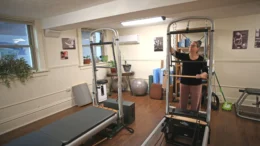You have springtime bass on the mind. We get it.
But do yourself a favor and take a moment to consider the plight of all the lowly vegetation lumped into the category of “weeds.”
Gardeners hate them. People fanatical about their lawns despise them. And the professionals who maintain golf courses? Well, they absolutely loathe them.
They just don’t get much love in their circles.
But when it comes to romance, there’s someone for everyone out there.
And so it is with weeds. They have their fans, too.
Springtime bass fishermen – at least those who want to be consistently successful – appreciate them, if neither for their inner or outer beauty, because weeds mean fish, and often lots of them.
The reason is simple: photosynthesis.
“Weeds are the most important component in any lake or river ecosystem. The reason is weeds produce oxygen,” said Bobby Uhrig, the New Jersey-based professional bass fisherman and lure designer behind Megastrike Inc.
They have to be the right color, though.
“Always look for green weeds, the greener the better,” he said. “If you start to see brown weeds, get away from those. They’re actually depleting the oxygen out of the water.
“But green weeds are signs fish will be around.”
That’s especially true early and late in the season. The first parts of a waterway to get green weeds in spring will draw fish, and the last to lose them in fall will hold fish longer.
And if those green weeds are around vertical cover, Uhrig added, you’re in a potential – and even likely – honey hole.
Bass are ambush predators, he noted. They like to have hiding places from which to launch attacks on prey.
They orient to structure. Uhrig defines structure as any change in the contour of a lake or river bottom, like a ditch or depression.
They really love vertical cover, though, which is “anything vertical that a fish can go and hide against.”
Vertical cover can be a stump, a boulder a rock pile, a tree that’s fallen into the water, a dock or something similar. All give bass places from which to jet out at minnows, crayfish and other morsels.
Any and all such cover is a “bass magnet,” Uhrig said.
That’s especially true if they’re in, amongst or near weeds.
“If you can go out and find those two components, weeds and anything vertical, the odds are that the bass are going to be there, and there are going to be more of them there,” Uhrig said.
Catching them is up to you, he said. But at least you’ll be casting where the fish are.
Bob Frye is the Everybody Adventures editor. Reach him at (412) 216-0193 or bfrye@535mediallc.com. See other stories, blogs, videos and more at everybodyadventures.com.































